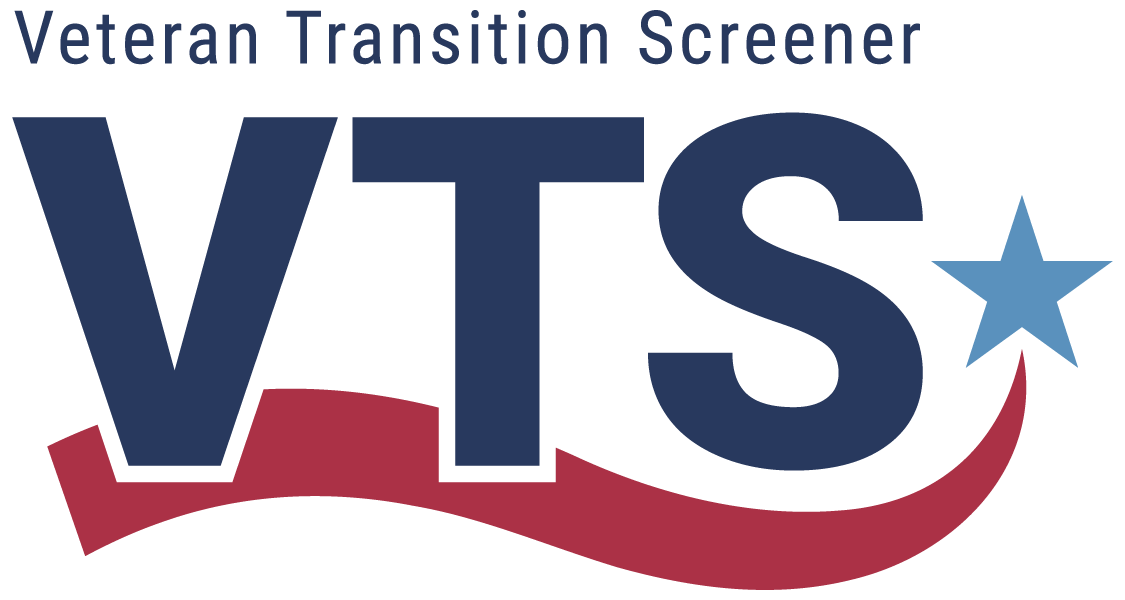
Overview
The VETERANetwork team, in partnership with May and Stanley Smith Charitable Trust, has created an electronic screener that can be used to help support veterans’ and their families’ well-being. The Veteran Transition Screener (VTS) can identify veterans’ risks and can help guide veteran-serving providers (e.g., mental health counselors, social workers, case managers, career counselors) through the use of empirical data to inform their decisions regarding the most effective program components that can be used to support veteran clients and their families. The VTS was developed from data collected as part of The Veterans Metrics Initiative (TVMI). The data were collected across life domains, from approximately 10,000 newly separated post-9/11 veterans, over nearly 3 years. The development of the VTS applies research results from two dimensions of TVMI to support veterans:
- Specific risk factors that are linked to poor well-being outcomes in each of the four domains of well-being (i.e., health [physical and mental], vocation [employment and education], finances [includes legal and housing], and social relationships); and
- Specific program-component needs (e.g., program content and process [delivery mechanisms], barrier-reduction strategies used, and sustainability techniques).
The VTS includes seven sections: background information, specific experiences, employment, education, financial, health, and social relationships. The background information and the specific experiences sections must be completed by all clients as they contain items that are predictive of veteran well-being. Service providers can choose from the other sections (i.e., employment, education, finance, health, and social) that they deem important and relevant to their clients. For example, a service provider for an employment program may choose to include the employment and education sections for their clients, while a service provider for a financial program may just choose to include the financial section. In some sections, certain items are only displayed to a client based on their response(s) to prior items. Therefore, the number of items a participant answers may vary depending on how they answer specific questions. The screener items were selected based on their predictability of outcomes, and attention was given to minimizing the number of items. The VTS has been programmed into an online format and automatically generates a client-specific report for providers that includes practical recommendations.
More Information
VTS Marketing Flyer VTS Information SheetGet Started
Providers who are using the VTS for the first time must read the training manual before administering the screener to clients. The training manual includes in-depth descriptions of the screener and automatically generated client reports, instructions for administering the screener to clients, screener materials (i.e., provider form, client email, and screener items), and an example client report.
VTS Training Manual
For providers who have previously used the VTS, the provider form can be directly accessed below.
Provider FormPlease contact us at veteranetwork@psu.edu regarding questions about the VTS.

